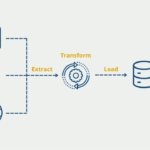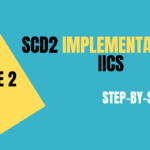Introduction:
Lookup transformations are vital components in data integration processes, enabling the enhancement of data by retrieving related information from reference tables. In this blog post, we’ll explore the key concepts, types, and use cases of Lookup Transformations in Informatica Intelligent Cloud Services (IICS). Whether you’re a seasoned data engineer or just starting, this guide will help you understand and effectively implement Lookup Transformations in your data workflows.
Key Topics to Cover:
- What is a Lookup Transformation?
- Definition: A Lookup Transformation is used in data integration to retrieve related data from a reference table or dataset. It enriches the source data by adding additional attributes based on a key match.
- Example: Suppose you have a table of transactions that includes a product ID. You can use a lookup transformation to retrieve the product name, category, and brand from a products table and append this information to the transactions.
- Types of Lookup Transformations:
- Connected Lookup:
- Definition: A Connected Lookup is directly integrated into the data flow. It can return multiple columns from the lookup table and is used when the retrieved data needs to be part of the main data processing.
- Example: Enriching sales transaction data with product details like name, category, and brand, all retrieved through a connected lookup.
- Unconnected Lookup:
- Definition: An Unconnected Lookup is called as a function, independent of the data flow. It returns a single value based on a condition, making it useful when you only need one piece of information.
- Example: Checking if a specific product ID exists in the product table and returning a status flag, without integrating the full data into the main pipeline.
- Connected Lookup:
- When to Use Connected vs. Unconnected Lookup:
- Connected Lookup:
- Use Case: Use when you need to add multiple columns of data from the lookup table into your main data flow. It’s ideal for scenarios where comprehensive data enrichment is required.
- Unconnected Lookup:
- Use Case: Use when you need to retrieve only a single value from the lookup table or when you want to conditionally perform a lookup. It’s efficient for tasks like validation or status checking.
- Connected Lookup:
- Caching Options in Lookup Transformations:
- Static Cache:
- Definition: The lookup table is cached once and used for all rows in the data flow. It’s efficient for datasets that don’t change frequently.
- Example: Using a static cache for a products lookup table when the product data is not expected to change during the process.
- Dynamic Cache:
- Definition: The lookup table is updated dynamically as the data flow progresses. It’s used when the reference data may change and needs to reflect those changes in real-time.
- Example: Using a dynamic cache when new products are added during the transaction processing and you want the lookup to reflect these additions immediately.
- Static Cache:
- Performance Considerations:
- Indexing Lookup Tables:
- Definition: Indexing the lookup table can significantly improve the performance of the lookup operation, especially for large datasets.
- Example: Indexing the product ID in the products table to speed up lookups during transaction processing.
- Optimizing Cache Size:
- Definition: Managing the cache size to fit within memory limits ensures efficient processing without spilling over to disk, which can slow down performance.
- Example: Configuring cache settings based on the size and frequency of lookup operations to balance memory usage and performance.
- Indexing Lookup Tables:
- Error Handling in Lookup Transformations:
- Definition: Proper error handling mechanisms should be in place to manage scenarios where the lookup fails to find a match.
- Example: Implementing default values or error logs for cases where the lookup does not find a corresponding entry in the reference table.
Conclusion:
Lookup Transformations are essential tools in data integration that help in enriching and validating data. Understanding the different types of lookup transformations, when to use them, and how to optimize their performance can greatly enhance your data workflows in IICS. Whether you’re performing simple lookups or complex data enrichment tasks, mastering these concepts will ensure your data pipelines are both robust and efficient.


